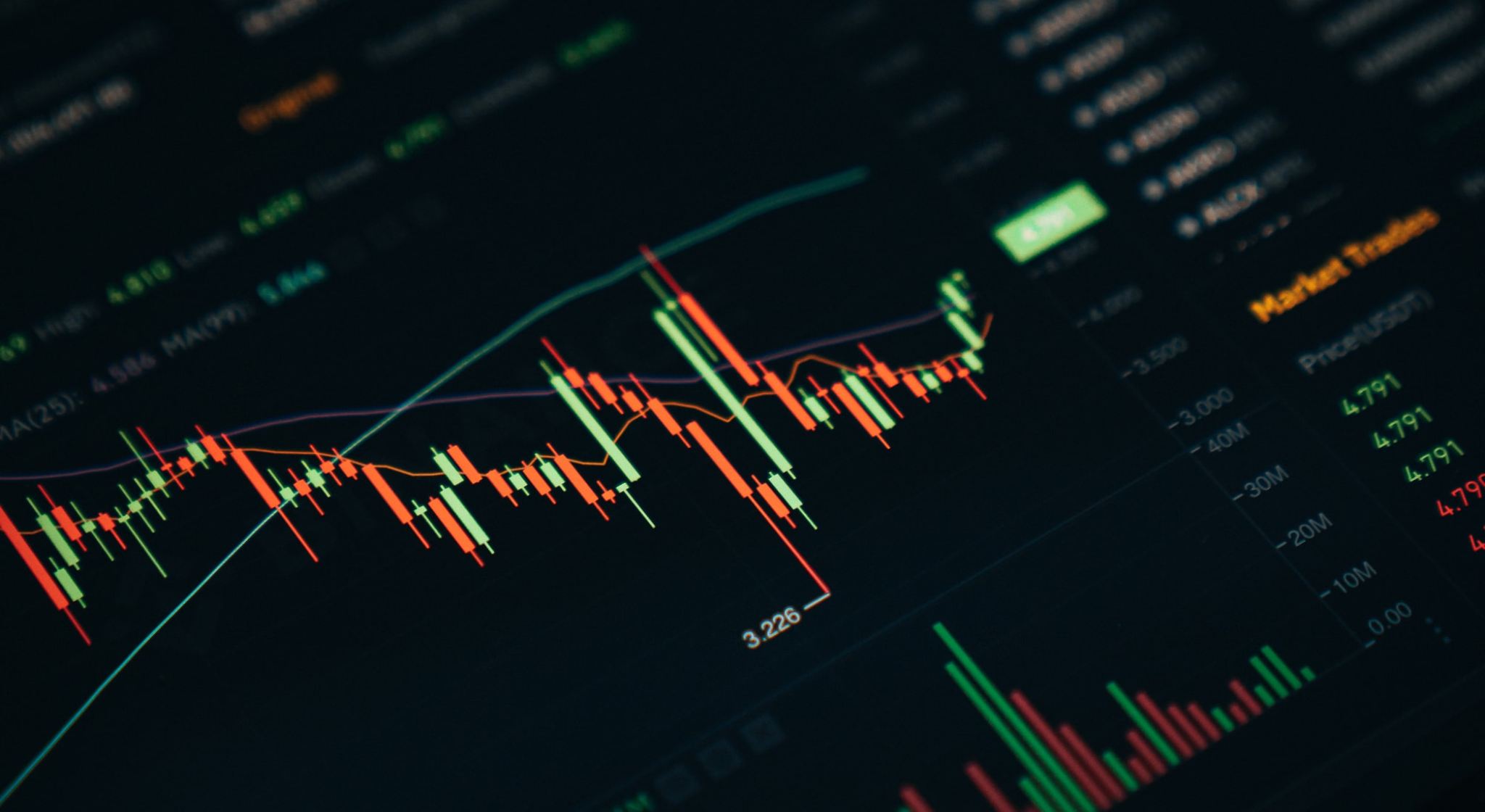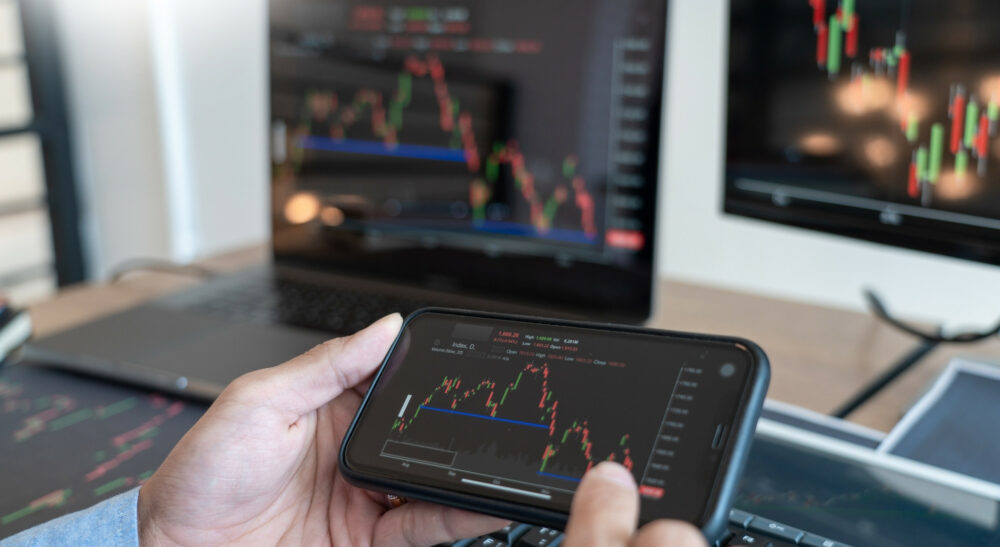Explore The Horrors of CFD Trading Scams - The Most Common Types To Be Aware of!
Excerpt: Some of the benefits of CFD trading include lower margin requirements, easy access to global markets, the absence of shorting or day trading rules, and the absence of or minimal fees. A high degree of leverage, on the other hand, magnifies losses when they do occur, and having to pay a spread to enter and exit positions can be expensive when large price movements do not take place. Indeed, in order to protect retail investors, the European Securities and Markets Authority (ESMA) has imposed restrictions on CFDs trading. You may have noticed that a large number of review sites and comments on social media claim that someone has assisted them in recovering their money from a CFD fraud scheme.
Introduction
CFD trading is expected to grow significantly in 2020. One of the most important characteristics of CFDs is that they allow you to trade on markets that are trending downwards as well as those that are trending upwards, allowing you to make money even when the market is experiencing turmoil. Unregulated social media advertising is a major source of these CFD scams, and it is one of the most prevalent. Despite the fact that social media platforms such as Facebook, Twitter, and Google have prohibited the advertising of CFDs for non-regulated brokers. Scam CFD advertisements continue to slip through the cracks. CFDs, which are a legitimate investment and trading products, are not the source of the difficulty.
They operate on the assumption that you trade using leverage and that your profit and loss are determined by the difference between the opening and closing prices at which you trade. CFDs are a high-risk investment vehicle that allows investors to speculate on liquid assets such as forex, indices, stocks, commodities, and interest rates. They have been around for decades but have only recently begun to become more widely available due to increased demand.
The fact is that CFDs were essentially self-regulated at the time. Because it took weeks to open an account, you had to fill out paper forms, mail-in identification, provide financial statements, and maintain a minimum account balance of £10,000 before you could be assigned an account number, all of which added up to a significant amount of time.
In addition, because there were no social media, there were no Instagram investment scams involving posers wearing Gucci trainers and driving Lamborghinis while claiming to trade by the pool for two hours every day – the so-called traders’ lifestyle. The Financial Conduct Authority (FCA) even joined Instagram in an attempt to raise awareness about how these scams operate. However, anyone can now open an account and begin trading CFDs within a matter of minutes, if not seconds.
When you want to withdraw money from a bank, AML checks are performed (leading to loads of complaints about clients claiming brokers are refusing to send their money back). CFDs are available to anyone, which means that anyone can trade them. However, just because anyone can trade CFDs does not imply that everyone should do so.
Since CFD trading is becoming all the rage today and more and more people are curious about what exactly CFD trading is and the different risks and returns associated with this practice, it is becoming a necessity to be well equipped with knowledge regarding this topic. If you want to learn more about CFD trading, what CFD trading scams are and how they take place, why CFD trading scams are on the rise, the history of CFD trading scams, the various types of CFD trading scams, different blacklisted CFD trading firms and how one can avoid getting scammed, continue reading!
Latest News & Scam Alerts




The Latest 411 on Current Day Cell Phone Scam

Smishing: A Whole New Level of Scams & Frauds
In Chile, a surge in interest in CFDs triggered a series of alleged Ponzi schemes and a congressional investigation. Some individual investors made big losses
Bloomberg News
If you are someone who’s interested in Trading CFDs, then you’re definitely at the right place. We can give you the best practices in identifying red flags as well as help you in recovering your stolen money from scammers!
Table of Contents
CHAPTER 1: Discover The Term - CFD Trading
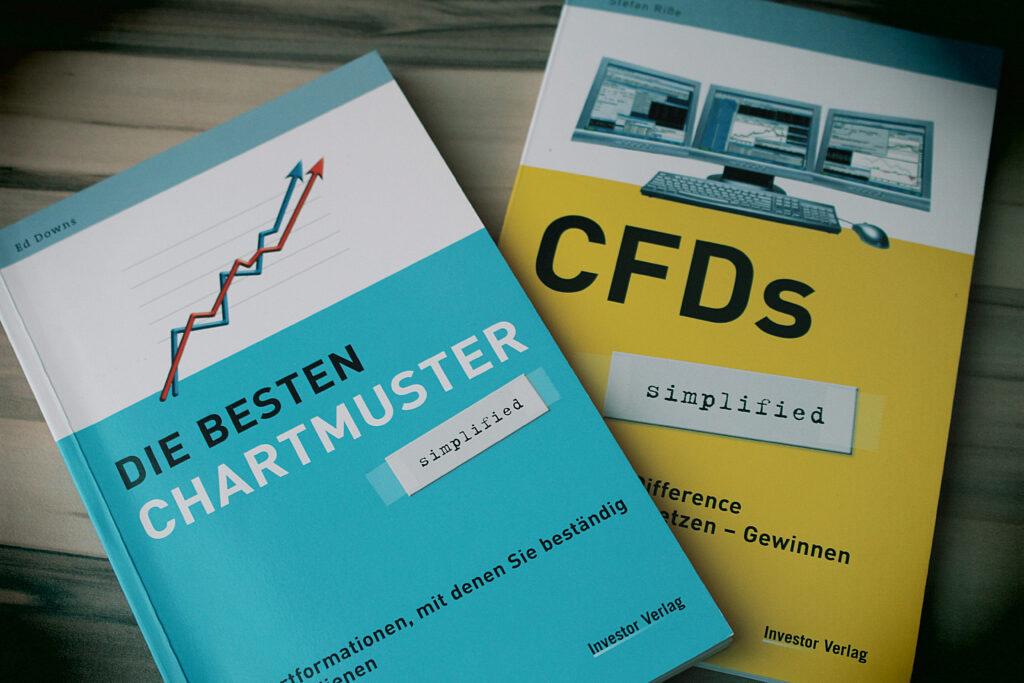
CFDs are contracts between buyers and sellers that stipulate that the buyer must pay the seller the difference between the current value of an asset and that asset’s value at the time the contract is entered into. With CFDs, traders and investors have the opportunity to profit from price movement without having to own the underlying assets themselves.
The value of a CFD contract does not take into account the underlying value of the asset; instead, it considers only the price change between the trade entry and exit. This is accomplished through the execution of a contract between the client and the broker rather than through the use of a stock, forex, commodity, or futures market.
Trading CFDs has a number of significant advantages that have contributed to the enormous growth in popularity of the instruments over the past decade. When an investor and a contract for differences (CFD) broker agree to exchange the difference in the value of a financial product between the dates on which the contract opens and closes, they are said to have entered into a contract for differences.

CFD investors do not actually own the underlying asset
In contrast to traditional investments, CFD investors do not actually own the underlying asset; instead, they receive revenue based on the change in the value of the asset. For example, CFDs provide access to underlying assets at a lower cost than purchasing the assets outright, allow for faster execution, and allow for both long and short positions in the asset. A disadvantage of CFDs is the immediate decrease in the value of the investor’s initial position, which is reduced by the size of the spread when the investor first enters the contract.
Additionally, there is a lack of industry regulation, the possibility of a liquidity shortage, as well as the requirement to maintain a sufficient margin. A contract for differences (CFD) is an agreement between an investor and a contract for differences broker (CFD broker) to exchange the difference in the value of a financial product (either a security or a derivative) between the time the contract opens and the time the contract is closed. It is a sophisticated trading strategy that should only be used by seasoned investors and traders. CFDs do not involve the delivery of physical goods or the transfer of securities.

In contrast to traditional investments, CFD investors do not actually own the underlying asset; instead, they receive revenue based on the change in the value of the asset. Rather than buying or selling physical gold, a trader can simply speculate on whether the price of gold will go up or down rather than buying or selling gold. Essentially, investors can use CFDs to place bets on whether the price of an underlying asset or security will rise or fall in the future. Market traders have the option of betting on either an upward or a downward movement. If the trader who has purchased a CFD notices that the price of the asset has increased, they will offer their holding for sale. The total of the net differences between the purchase price and the sale price is the total of the net differences.
The net difference between the two trades, which represents the gain from the trades, is settled by the investor’s brokerage account. For those who believe the asset’s value will fall in value, it is possible to open a sell position at a higher level. Purchasing an offsetting trade is required in order to close a position in a trading account. Then, the difference between the net profit and the net loss is paid out in cash through their account.
HAVE YOU BEEN SCAMMED AND NEED HELP IN FIGHTING BACK?
Scammers can create complex scams that can trap even the most cautious of people. But it’s not too late because we can help you track the damage done by scammers.
We can help you get your money back!
They are permitted in listed and over-the-counter (OTC) markets in many major trading countries
CFD contracts are not permitted in the United States. They are permitted in listed and over-the-counter (OTC) markets in many major trading countries, including the United Kingdom, Germany, Switzerland, Singapore, Spain, France, South Africa, Canada, New Zealand, Hong Kong, Sweden, Norway, Italy, Thailand, Belgium, Denmark, and the Netherlands.
They are prohibited in unlisted and over-the-counter (OTC) markets in many major trading countries, including the United States. While CFD contracts are currently permitted in Australia, the Australian Securities and Investment Commission (ASIC) has announced changes to the way CFD contracts are issued and distributed to retail clients.
CFD leverage available to retail clients is being reduced, and CFD product features and sales practices that amplify retail clients’ losses are being targeted by ASIC in order to strengthen consumer protections, according to the regulator. The Product Intervention Order issued by ASIC became effective on March 29, 2021. The Securities and Exchange Commission (SEC) of the United States has restricted the trading of CFDs in the United States, but non-residents are permitted to do so.

The costs of trading CFDs include a commission (in some cases), a financing cost (in some situations), and the spread—the difference between the bid price (purchase price) and the offer price at the time you trade. Commissions and financing costs are not included in the cost of trading CFDs. When trading forex pairs and commodities, there is typically no commission charged. Brokers, on the other hand, typically charge a commission for stocks. For example, the broker CMC Markets, a financial services company based in the United Kingdom, charges commissions that begin at.10 percent, or $0.02 per share, for stocks that are traded on the New York Stock Exchange and the Toronto Stock Exchange.
Due to the fact that the opening and closing trades are two separate transactions, you will be charged a commission for each transaction. If you take a long position in a product, you may be subject to a financing charge because overnight positions in that product are considered an investment (and the provider has lent the trader money to buy the asset). Traders have typically assessed an interest charge for each day that they hold a position in their account.
If a trader wants to buy CFDs on the share price of GlaxoSmithKline, for example, he will enter the following information: The trader enters into a contract for £10,000 in value. GlaxoSmithKline is currently trading at £23.50 per share. The trader anticipates that the share price will rise to £24.80 per share in the near future. The bid-offer spread is 24.80 to 23.50 cents percentile point.
If your money was stolen from an investment scam then contact us to help you get your money back!

0.1 percent commissions are applied
The trader will be required to pay a 0.1 percent commission when the position is opened and another 0.1 percent commission when the position closes. Traders who hold long positions will be charged a financing fee, which will be charged overnight (normally the LIBOR interest rate plus 2.5 %). The trader purchases 426 contracts at a price of £23.50 per share, resulting in a total trading position of £10,011. Assume that the share price of GlaxoSmithKline rises to £24.80 in 16 days from its current level. The trade has a starting value of £10,011 but ends up having a final value of £10,564.80.
Some financial commentators and regulators have expressed concern about the way in which CFDs are being marketed by CFD providers to new and inexperienced traders. This includes the way in which potential gains are advertised in a way that may not fully explain the risks involved in the process. In anticipation of and in response to this concern, the majority of financial regulators who regulate CFDs require that risk warnings be prominently displayed on all advertising, websites, and when new accounts are opened, among other things.

According to the Financial Services Authority (FSA) of the United Kingdom, CFD providers must assess the suitability of CFDs for each new client based on their experience. They must provide all new clients with a risk warning document based on a general template developed by the FSA. According to the Australian financial regulator ASIC’s trader information website, trading CFDs is riskier than gambling on horses or visiting a casino. It recommends that trading CFDs be carried out by individuals who have extensive trading experience, particularly during volatile markets, and who are able to withstand losses that cannot be avoided by any trading system.
In addition, there has been concern that CFDs are little more than gambling, implying that the vast majority of traders lose money when they trade CFDs. It is impossible to determine the average returns from trading because there are no reliable statistics available, and CFD providers do not publish such information; however, prices of CFDs are based on publicly available underlying instruments, and the odds are not stacked against traders because the CFD is simply the difference between the underlying price and the price of the underlying.

There is no standard contract in place
Also of concern is that CFD trading is not transparent due to the fact that it is conducted primarily over the counter (OTC) and that there is no standard contract in place. As a result, some have speculated that CFD providers may be able to take advantage of their clients. On trading forums, this is a topic that comes up frequently, particularly when it comes to the rules for executing stops and liquidating positions in a margin call situation.
Also using this technique to support their particular offering are the Australian Securities Exchange, which is promoting their Australian exchange-traded contract for difference (CFD), and some CFD providers who are marketing direct market access products. It is their contention that their offering mitigates this particular risk in some way.
The counter-argument is that there are numerous CFD providers and that the industry is extremely competitive, with more than twenty CFD providers in the United Kingdom alone, according to the argument. Clients could switch to a different service provider if they were having problems with one. Some of the criticism leveled at CFD trading is related to the fact that CFD brokers are unwilling to inform their customers about the psychology involved in this type of high-risk trading, according to the CFTC. When users switch from a demonstration account to a real account, factors such as the fear of losing, which manifests itself as neutral or even losing positions, become a reality.
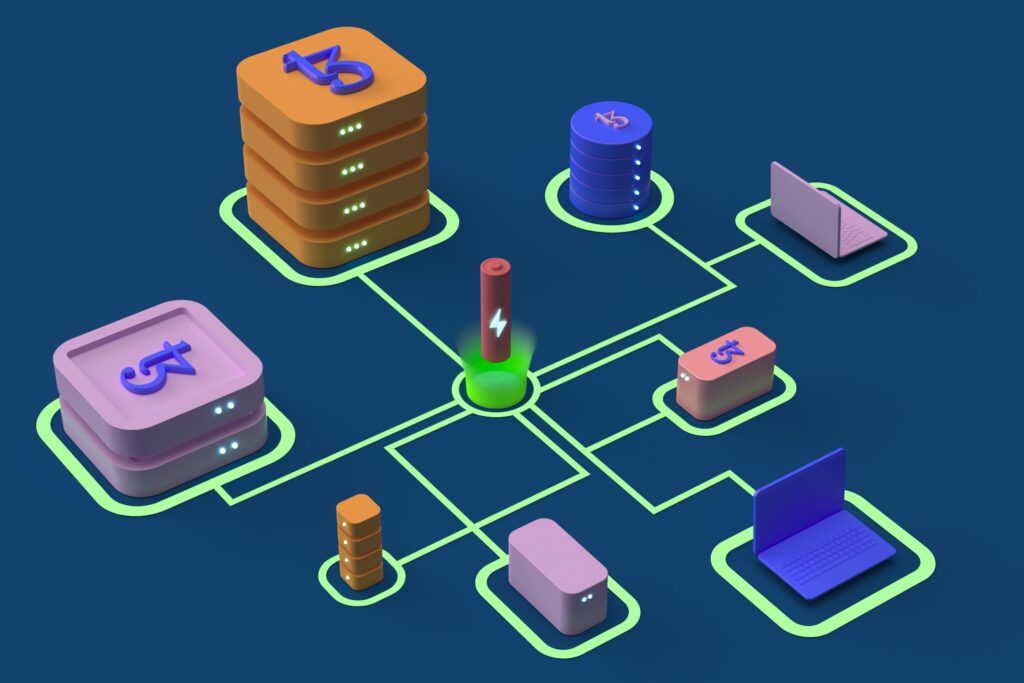
The majority of CFD brokers do not provide documentation to support this claim. Criticism has also been leveled at the way some CFD providers hedge their own exposure, as well as the potential conflict of interest that this could create when defining the terms under which the CFD is traded. According to one article, some CFD providers had been taking positions against their clients based on their client profiles in the expectation that those clients would lose, resulting in a conflict of interest for the providers themselves.
It has been suggested that CFDs, when offered by providers operating under the market maker model, are analogous to the bets sold by bucket shops, which were popular in the United States at the turn of the twentieth century. These allowed speculators to place highly leveraged bets on stocks that were not typically backed or hedged by actual trades on an exchange, resulting in the speculator effectively betting against the house. Despite the colorful descriptions in Jesse Livermore’s semi-autobiographical novel Reminiscences of a Stock Operator, bucket shops are considered illegal in the United States under both criminal and securities law, according to the author.

CHAPTER 2: Why People See CFD as an Opportunity
Higher Leverage
CFDs offer greater leverage than traditional trading because of the nature of the market. In the CFD market, standard leverage is subject to regulatory oversight. While it used to be possible to have as little as a 2% maintenance margin (50:1 leverage), it is now restricted to a range of 3% (30:1 leverage) and may even go as high as 50% (2:1 leverage). Less capital outlay for the trader translates into greater potential returns as the margin requirements are lowered. Increased leverage, on the other hand, has the potential to magnify a trader’s losses.
Access to the Global Market Through a Single Platform
Many CFD brokers provide products in all of the world’s major markets, allowing clients to trade at any time of day or night. CFDs can be traded on a wide range of global markets, allowing investors to diversify their portfolios.

There Are No Shorting Rules or Borrowing Stock
Certain markets have rules that prohibit shorting, require the trader to borrow the instrument before selling short, or have different margin requirements for short and long positions, depending on the exchange. Because the trader does not own the underlying asset, CFD instruments can be shorted at any time without incurring borrowing fees.
Execution by A Seasoned Professional with No Fees
CFD brokers provide many of the same order types as traditional brokers, including stops, limits, and contingent orders, such as “one cancels the other” and “if done.” CFD brokers also offer a variety of other order types, such as “if done.” Some brokers who provide guaranteed stops will charge a fee for the service or recoup costs in some other way to cover their costs. When a trader pays the spread, the broker earns a commission. They may charge commissions or fees from time to time. A trader must pay the asking price in order to purchase, and in order to sell or short, the trader must pay the bid price. It is possible to trade with a small or large spread depending on the volatility of the underlying asset; fixed spreads are frequently offered.

There Are No Requirements for Day Trading
Certain markets require a minimum amount of capital to day trade. Others place restrictions on the number of day trades that can be executed within a given period of time within a given account. The CFD market is not constrained by these limitations, and all account holders are free to engage in day trading if they so choose. A savings account can often be opened for as little as $1,000, though most banks require a minimum deposit of $2,000 or $5,000 to get started.
A Wide Range of Trading Possibilities
CFDs on stocks, indexes, treasuries, currencies, sectors, and commodities are currently available from brokers. Speculators interested in a variety of financial instruments can trade CFDs as an alternative to trading on exchanges as a result of this.
CHAPTER 3: There are More Drawbacks Than Advantages
Traders Pay the Spread
While contracts for difference (CFDs) are an appealing alternative to traditional markets, they also carry the risk of losing money. For starters, having to pay the spread on entries and exits eliminates the possibility of profiting from small movements in the marketplace. In addition, the spread reduces winning trades by a small amount when compared to the underlying security and increases losses by a small amount when compared to that security. As a result, whereas traditional markets subject traders to fees, regulations, commissions, and higher capital requirements, CFDs reduce traders’ profits by imposing spread costs on trades.

A Lack of Effective Industry Regulation
The CFD industry is not heavily regulated at this time. The credibility of a CFD broker is determined by factors such as reputation, longevity, and financial position rather than factors such as government standing or liquidity. There are some excellent CFD brokers available, but it’s important to thoroughly research a broker’s history before opening an account with them.
Risks
CFD trading is a fast-paced endeavor that necessitates constant attention. As a result, when trading CFDs, traders should be aware of the significant risks that they are taking. There are liquidity risks and margins that must be maintained; if you are unable to cover value reductions, your provider may close your position, and you will be responsible for the loss regardless of what happens to the underlying asset. You run the risk of greater potential profits but also greater potential losses when you take on leverage risks.
While stop-loss limits are available from many CFD providers, they cannot guarantee that you will not suffer losses, particularly if the market is closed or if the price of the CFD moves dramatically. Execution risks can also arise as a result of lags between trades. As a result of the lack of regulatory oversight and the significant risks involved, CFDs are prohibited in the United States by the Securities and Exchange Commission (SEC).

CHAPTER 4: Example of a CFD Trade
Consider the following scenario: a trader purchases 100 shares of a stock with an asking price of $25.26. The transaction has a total cost of $2,526 (plus any commission and fees). For this trade to be executed at a traditional broker in a 50% margin account, at least $1,263 in free cash is required, whereas a CFD broker only requires a 5% margin of $126.30, or $126.30 in cash.
A CFD trade will result in a loss equal to the size of the spread that was in effect at the time of the trade. If the spread is $0.05 cents, the stock must gain $0.05 cents in order for the position to reach the break-even point. While you would have made a $0.05 profit if you had purchased the stock outright, you would have also had to pay a commission and made a larger initial investment. If the stock rises to a bid price of $25.76 in a traditional broker account, it can be sold for a $50 profit, or $50 divided by $1,263 equals 3.95% profit on the transaction.
However, if the national exchange reaches this price, the CFD bid price may only be $25.74 when the national exchange reaches it. Because the trader must exit at the bid price and because the spread is wider than on the regular market, the CFD profit will be lower than on the regular market. In this example, the CFD trader earns an estimated $48 or $48 / $126.30 = 38% return on investment, which is a return on investment of approximately $48.
The CFD broker may also require the trader to purchase at a higher initial price, such as $25.28, in order to avoid losing money. Despite this, the $46 to $48 earned on the CFD trade represents a net profit, whereas the $50 profit earned from owning the stock outright does not include commissions or other fees and represents a gross profit. As a result, the CFD trader ends up with more money in their wallet.
WORRIED THAT SOMEONE HAS YOUR PERSONAL & BUSINESS INFORMATION?
With how easy it is for scammers to acquire your data, it’s reasonable to be alarmed. Protect yourself and your loved ones by getting advice from experts.
We will guide and even help you get your money back from scammers.

CHAPTER 5: History of CFD Trading & How They Evolved into Scams
CFDs were first introduced in London in the early 1990s as a type of equity swap that could be traded on margin. Since then, they have grown in popularity. It is widely believed that Brian Keelan and Jon Wood, both of UBS Warburg, invented the CFD during their Trafalgar House deal in the early 1990s and that they were the first to do so. CFDs were initially used by hedge funds and institutional traders to gain cost-effective exposure to stocks listed on the London Stock Exchange, partly because they required only a small margin and, more importantly because no physical shares were exchanged, they were able to avoid paying stamp duty in the United Kingdom because no physical shares were exchanged.
Hedged funds and other asset managers continue to use CFDs as a substitute for physical holdings (or physical short selling) of UK listed equities, despite the fact that CFDs have similar risk and leverage profiles to physical holdings. Often, the prime broker of a hedge fund will act as the counterparty to a CFD, and it will use physical stock trading on the exchange to hedge its own risk under the CFD (or its net risk under all CFDs held by its clients, long and short). Trades entered into by the prime broker for its own account and the purpose of hedging will be exempt from UK stamp duty.

CFDs were first made available to retail traders in the late 1990s. Many UK-based companies contributed to their widespread popularity, which was characterized by innovative online trading platforms that made it simple to see live prices and transact in real-time. In this regard, GNI (originally known as Gerrard & National Intercommodities) was the first company to do so; GNI and its CFD trading service GNI Touch were later acquired by MF Global. They were quickly followed by IG Markets and CMC Markets, which both began to popularize the service in 2000, shortly after they launched.
Around 2001, a number of CFD providers realized that CFDs had the same economic effect as financial spread betting in the United Kingdom, with the exception of the fact that spread betting profits were not subject to Capital Gains Tax in the United Kingdom. In parallel with their CFD offerings, the majority of CFD providers also launched financial spread betting operations. In the United Kingdom, the CFD market is very similar to the financial spread betting market, and the products are very similar as well. Spread betting, on the other hand, has remained primarily the UK and Irish phenomenon, in contrast to CFDs, which have been exported to a number of different countries. This is because spread betting relies on a country-specific tax advantage.
After that, CFD providers began to expand into new international markets, with IG Markets and CMC Markets launching their operations in Australia in July 2002. Since then, CFDs have been legalized in a number of other countries as well. They are available in the following countries: Australia, Austria, Canada, Cyprus, France, Germany, Ireland, Israel, Italy, Japan, the Netherlands, Luxembourg, Norway, Poland, Portugal, Romania, Russia, Singapore, South Africa, Spain, Sweden, Switzerland, Turkey, the United Kingdom, and New Zealand.
They are also available in the following countries: Because of their high risk, they are not permitted in a number of other countries, including the United States, where the Securities and Exchange Commission (SEC) and the Commodity Futures Trading Commission (CFTC) prohibit CFDs from being listed on regulated exchanges due to the high volatility of the markets. CFD trading is completely prohibited by the Securities and Futures Commission of Hong Kong.

Residents of Hong Kong, on the other hand, can trade CFDs through foreign brokers. CFDs were included in a warning issued by the European Securities and Markets Authority (ESMA) in 2016 regarding the sale of speculative products to retail investors, which included the sale of futures contracts.
Most CFDs are traded over the counter (OTC) using the direct market access (DMA) or market maker model. Still, the Australian Securities Exchange (ASX) did offer exchange-traded CFDs from 2007 to June 2014, but only for a short period of time. The result was that the Australian exchange only saw a small percentage of the CFDs traded during this time period. When it came to most financial products, the advantages and disadvantages of having an exchange-traded CFD were similar.
Having an exchange-traded CFD reduced counterparty risk and increased transparency, but the costs were higher. Because of the disadvantages of ASX exchange-traded CFDs, as well as a lack of liquidity, the vast majority of Australian traders have turned to over-the-counter CFD providers. The Financial Services Authority (FSA) of the United Kingdom implemented a general disclosure regime for contracts for difference (CFDs) in June 2009 to prevent them from being used in insider information cases.
This followed a number of high-profile cases in which positions in CFDs were used instead of the physical underlying stock to avoid disclosure requirements under the normal insider information disclosure rules. LCH.Clearnet, in collaboration with Cantor Fitzgerald, ING Bank, and Commerzbank, launched centrally cleared CFDs in October 2013, in line with the EU financial regulators’ stated goal of increasing the proportion of cleared OTC contracts.

CFDs were included in a warning issued by the European Securities and Markets Authority (ESMA) in 2016 regarding the sale of speculative products to retail investors, which included the sale of futures contracts. Following their observation of an increase in the marketing of these products at the same time as an increase in the number of complaints from retail investors who had suffered significant losses, they took action. Under MiFID, any provider based in any member country can offer the products to all member countries in Europe. Many European financial regulators responded to the warning by enacting new rules on CFD trading.
The majority of providers are based in either Cyprus or the United Kingdom, and the financial regulators in both countries were among the first to respond. In November 2016, CySEC, the financial regulator in Cyprus, where many of the firms are based, tightened the rules on CFDs by limiting the maximum leverage to 50:1 and prohibiting the payment of bonuses as sales incentives, among other changes. Following this, the Financial Conduct Authority (FCA) of the United Kingdom (UK) issued a proposal for similar restrictions on December 6, 2016, which was subsequently adopted.
The FCA implemented additional restrictions on CFDs and CFD-like options on August 1, 2019, and September 1, 2019, respectively, with the maximum leverage being 30:1. In response to the ESMA warning, the German regulator BaFin took a different approach and prohibited additional payments when a client suffered a loss. CFD advertising has been banned in France by the regulator, the Autorité des marchés financiers (Authority of Financial Markets).
In March, the Irish financial regulator followed suit and issued a proposal to either ban CFDs or impose limits on leverage in the country’s financial markets. Contracts for Difference (CFD) were introduced by the Energy Act 2013 to support new low-carbon electricity generation in the United Kingdom, including nuclear and renewable sources. Contracts for Difference (CFD) gradually replaced the previous Renewables Obligation scheme. In some countries, such as Turkey, the price may be set by the government rather than being determined through an auction process.

CHAPTER 6: Risks Associated with CFD Trading Scams
Market Risk
Due to the nature of the contract for difference trading, which is designed to pay the difference between the opening price and the closing price of the underlying asset, the primary risk is market risk. CFDs are traded on margin, which increases both the risk and the reward because of the use of leverage. According to a study conducted by Saferinvestor in the year 2021, the average client loss when trading CFDs was 74.38 percent. According to the Financial Conduct Authority of the United Kingdom, the average loss per client is approximately £2,200. It is precisely this risk that motivates the use of CFDs, whether for speculative purposes on the movements of financial markets or to hedge existing positions in other financial instruments.
The use of stop-loss orders is one method of reducing the risk associated with trading. Typically, users deposit a certain amount of money with the CFD provider in order to cover the margin, and they stand to lose significantly more than this deposit if the market moves against them. When looking at the overall leverage of a portfolio, an investment vehicle’s portfolio will typically contain elements that compensate for the leverage inherent in CFDs. This is especially true in the professional asset management industry. Maintaining cash positions in a portfolio, in particular, reduces the effective leverage of a portfolio.
For example, if an investment vehicle purchases 100 shares for $10,000 in cash, this provides the same exposure to the shares as entering into a CFD for the same 100 shares with $500 of margin and keeping $9,500 in cash reserves. This does not necessarily imply that increased market exposure will result from the use of CFDs in this situation (and where there is increased market exposure, it will generally be less than the headline leverage of the CFD).

Liquidation Risk
If prices move in the opposite direction of an open CFD position, an additional variation margin is required to keep the margin level constant. In what is known as a margin call, the CFD providers may request that the party deposit additional funds in order to cover the shortfall. In fast-moving markets, margin calls may be made at any time without prior notice. If funds are not received in a timely manner, the CFD provider may close or liquidate the positions, incurring a loss for which the other party is obligated to compensate.
Counterparty Risk
Another aspect of CFD risk to consider is counterparty risk, which is a factor in the majority of over-the-counter (OTC) derivatives. In a contract, counterparty risk is associated with the financial stability or solvency of the party who is the other party. The failure of the counterparty to a CFD contract to meet their financial obligations may result in the CFD contract having little or no value, regardless of the underlying instrument being traded. In practice, this means that even if the underlying instrument moves in the desired direction, a CFD trader could potentially suffer significant losses in the process.
Customers’ funds are required to be segregated by OTC CFD providers in order to protect their balances in the event of company default, but cases such as the one of MF Global remind us that guarantees can be breached. Generally speaking, exchange-traded contracts that are traded through a clearinghouse are considered to have lower counterparty risk. At the end of the day, the degree of counterparty risk is defined by the credit risk of the counterparty, which may include the clearing house if one is present. This risk is heightened as a result of the fact that custody is tied to the company or bank that provides the trading service in question.

CHAPTER 7: Comparing CFD Trading with Other Financial Instruments
Futures
Future contracts for indices and interest rate trading are preferred over CFDs by professionals because they are mature product that is traded on an exchange. If CFDs are compared to forward contracts, the most significant differences are that contract sizes are smaller, making them more accessible to small traders, and pricing is more transparent. Unlike futures contracts, which tend to converge to the price of their underlying instrument near the expiration date, contracts for difference (CFDs) never expire and simply mirror the price of their respective underlying instruments.
Due to the ease with which futures prices can be obtained, futures are frequently used by CFD providers to hedge their own positions. As a result, many CFDs are written over futures. Due to the fact that CFDs have no expiration dates when a CFD is written over a futures contract, the CFD contract must deal with the expiration date of the futures contract. When liquidity begins to dwindle in the final few days before expiration, it is standard industry practice for the CFD provider to ‘roll’ the CFD position to the next future period, resulting in a rolling CFD contract.
DO YOU NEED EXPERT ADVICE?
We have encountered victims who were mentally and emotionally drained when they were scammed out of their money.
We can help you with your legal and technical concerns and we can help you get your money back.
Options
Options, like futures, are well-established financial instruments that are traded on exchanges, cleared centrally, and used by professionals. Options, like futures, can be used to hedge risks or to take on additional risks in order to speculate on the market. CFDs are only comparable in the second scenario. The main advantage of CFDs over options is the simplicity of the pricing structure and the wide range of underlying instruments available.
An important disadvantage of a CFD is that, unlike an option, it cannot be allowed to expire or lapse. Essentially, this means that the downside risk of a CFD is limitless, whereas the most money that can be lost on an option (by a buyer) is equal to the cost of purchasing the option itself. In addition, if the market moves against the trader, no margin calls are made on the options contract. When compared to CFDs, option pricing is complex and exhibits price decay as the expiration date approaches, whereas CFDs prices simply reflect the price of the underlying instrument. CFDs, unlike options, cannot be used to reduce risk in the same way that they can.

Covered Warrants
Covered warrants, which are similar to options, have become increasingly popular in recent years as a low-cost means of speculating on market movements. CFDs have lower costs for short periods of time and a much wider range of underlying products than other financial instruments. Some brokers in markets such as Singapore have been aggressively promoting CFDs as alternatives to covered warrants, which may have contributed to the decline in the volume of covered warrants traded.
Commodities, Foreign Exchange, and Physical Shares
In order to trade in the financial markets in the traditional manner, one must establish a working relationship with an agent in each country, pay brokerage fees and commissions, and deal with the settlement process for that particular product. Because of the introduction of discount brokers, this has become easier and more affordable; however, it can still be difficult for retail traders, particularly when trading in foreign markets.
This is a capital-intensive endeavor if no leverage is used, as all positions must be fully funded. Using CFDs makes it much easier to gain access to global markets at significantly lower costs, and they also make it much easier to enter and exit positions quickly. Financial costs are incurred in all forms of margin trading, which are essentially the costs of borrowing the money to cover the entire position.

Margin Lending
When it comes to margin lending, also known as margin buying or leveraged equities, they have all the same characteristics as physical stocks discussed previously, but with the addition of leverage. This means that similar to CFDs, futures, and options, much less capital is required, but risks are increased. Since the introduction of CFDs, a significant number of traders have switched from margin lending to CFD trading.
In comparison to margin lending, the main advantages of CFDs include the fact that there are more underlying products available, the margin rates are lower, and it is simple to go short. The ability to short sell stocks has continued despite recent bans on short selling by CFD providers who have been able to hedge their books in other ways.
CHAPTER 8: What Are CFD Trading Scams?
The European Securities and Markets Authority (ESMA), which is the European equivalent of the Financial Conduct Authority (FCA), has mandated that all FCA-regulated brokers publish the percentage of clients who lose money when trading CFDs with them on their websites and marketing materials. It has become clearer than ever that high-risk investment products are not suitable for everyone.
But, on the other hand, the sooner you try to make money, the sooner you must accept the fact that you may lose it just as quickly. So, the product is high-risk, to be sure, but it is also self-directed and only requires execution. The Financial Conduct Authority (FCA) rules state that you cannot advise clients on what to invest in, even if you are giving implied advice. This means that clients are responsible for making their own investment decisions. If they suffer a financial loss, they are the ones who have pulled the trigger.
In some cases, this is done in order to generate a higher commission on each trade for them. In films such as Wolf of Wall Street and Boiler Room, these were the types of scams that were perpetrated. In the worst cases, CFD scammers attempt to trick their victims into intentionally losing money. Scam CFD brokers make money by intentionally encouraging their clients to deposit money and then losing money by failing to hedge their clients’ positions. This implies that the trades are fictitious and that they are acting more like a bookie than a broker in this situation.

The FCA has begun to take action because it is now so simple to set up a brokerage that appears to be legitimate and to use social media to entice clients to do business with them. Offshore CFD brokers were previously able to register for regulation in Cyprus and then be passported into the UK’s Financial Conduct Authority (FCA) register. Thus, prospective clients can verify whether or not the companies are legitimate by looking them up on the Financial Conduct Authority’s website (FCA). As a result, simply looking to see if a company is regulated by the FCA is insufficient to determine whether it is a scam or not. The use of the FCA is one of the most powerful tools in a scammer’s arsenal.
If a company appears to have been vetted by the Financial Conduct Authority, investors are more likely to be duped. The Financial Conduct Authority (FCA) is currently taking action to try and prevent Cypriot and offshore firms from passporting into the United Kingdom. When it comes to scams, common sense should always prevail, but scammers are cunning and skilled at manipulating people through subtle or direct means.
If you are thinking about trading CFDs, keep these golden rules in mind. If something appears to be too good to be true, it probably is. Never believe lifestyle advertisements – CFD brokers are not permitted to advertise their products as lifestyle products. These are most likely from affiliates who are attempting to persuade you to enroll in their trading course or refer you to an offshore unregulated brokerage firm.
Cold calls are an indication of impending danger. You should immediately hang up if you receive a call from a pushy salesperson and report them. It raises a red flag right away. Genuine brokers do call new clients to welcome them into the service, so not all calls from CFD brokers are scams. However, there is a distinct difference between a welcome call and someone calling you on a crackly line and suggesting that you can “make a second income through forex trading.” There is no risk warning.
If you see online advertisements that do not include a risk warning, avoid clicking on them and report them. We’ve discussed in the past how the requirement for risk warnings leads to risk warning fatigue, which means that people begin to ignore legitimate advertisements and become more susceptible to being seduced by advertisements that do not include a risk warning.

There is no FCA regulation. The fact that the FCA is involved does not mean that something is not a scam. Just look at London Capital & Finance and their £230 million mini-bond scams as an example of what we mean. However, it is a good starting point for your online due diligence. Never give in to peer pressure. No legitimate CFD broker will ever put you under any kind of pressure to open an account. There will be no more churning and burning of clients. Good CFD brokers want to build long-term relationships with their clients who have a lot of experience.
This is the most fundamental and widely recognized trade format currently available. It enables individuals from any country to participate in a number of different financial markets at the same time. Trading in a traditional manner has the disadvantage of only allowing you to trade in a single market at a given time. When you open an account with an online CFD broker, on the other hand, you have access to a large number of different financial markets from which to trade. The derivative trading vehicle known as a contract for difference (CFD) allows you to trade the value of assets without actually exchanging the assets themselves.
When you trade a CFD, you are not acquiring ownership of the underlying asset. This means that you will be able to place orders in multiple markets at the same time. Stocks, commodities, indices, and a wide range of other CFDs are among the most popular and well-known CFDs available today, and they are available in a variety of markets. In the financial world, CFD (contracts for difference) are financial derivatives that allow traders to speculate on price movements in the short term.

The ability to trade with leverage, as well as the ability to go short (sell) if you believe prices will fall and long (buy) if you believe prices will rise, are just a few of the advantages of contract for difference (CFD) trading. In addition to the fact that they are tax-efficient in the United Kingdom and do not require the payment of stamp duty, CFDs have a number of other advantages. Please keep in mind that tax treatment varies depending on individual circumstances and that tax treatment may differ or vary in countries other than the United Kingdom. CFD transactions can also be used to hedge a real-world investment portfolio if the situation calls for it.
CFDs are financial instruments that allow traders to speculate on the price movement of assets and derivatives. Derivatives are financial investments that are derived from the performance of an underlying asset (the underlying asset). In order to speculate on the price movement of an underlying asset or security, investors can use contracts for difference (CFDs). CFDs allow traders to speculate on whether the price will rise or fall in the future. CFD traders will purchase a CFD if they anticipate an upward price movement, whereas traders who anticipate a downward price movement will sell an opening position. Contracts for differences can be used to exchange a wide range of assets and securities, including exchange-traded funds (ETFs) (ETFs).
Trades in commodities futures contracts, such as crude oil and corn, will also be made using these products, with traders speculating on price movements in these contracts. Futures contracts are regulated agreements or contracts. A buyer or seller agrees to buy or sell a specific asset at a defined price with a future expiration date at a predetermined price and time. CFDs are not futures contracts in and of themselves, but they do provide investors with the opportunity to speculate on changes in the price of futures contracts. CFDs are traded in the same way as other assets, with buying and selling prices, and they do not have predetermined expiration dates like stocks and bonds do.

CFD scams are on the rise, as are other types of internet fraud, such as bitcoin scams, which are also on the rise. Because of the increase in the number of fraudulent schemes posing as legal brokers, government regulatory agencies have advised investors to exercise caution when making online investments. You must use a regulated broker and a service that has an established track record of profitability and dependability if you want to trade CFDs safely.
There are hundreds of CFD platforms available on the internet. Several financial authorities have granted licenses to a number of these individuals. In addition, there are a few establishments that do not have a permit or license. In recent years, several companies operating without a valid license, in particular, have been implicated in a number of scam incidents. People from all over the world participate in CFD trading in the hopes of making large profits, enticed by the promise of high returns on their investments. CFD scammers, on the other hand, are causing an increasing number of traders to lose substantial sums of money. Since trading became popular and possible many decades ago, fraud has unfortunately been a part of trading professionals’ everyday lives.
The fact that CFDs include internet trading means that they expose people to scammers and increase their likelihood of becoming a victim of one. Make an investment decision only if you are an experienced investor who has a thorough understanding of financial markets and is aware of the risks associated with CFDs and cryptocurrency trading.

CHAPTER 9: CFD Trading Scams Trends Show an Uphill Incline
Scams that take advantage of online trading platforms are frequently advertised on the internet and social media platforms. Con artists typically promise large profits in exchange for people’s participation in their scams, and they use fictitious celebrity endorsements and photographs of luxurious items to entice people to take part. Afterward, the advertisements direct consumers to professional-looking websites where they are persuaded to invest, either through a managed account in which the firm executes trades on their behalf or by trading directly on the firm’s trading platform.
Contracts for difference, also known as CFDs, have been in existence since the early 1990s, but their popularity is expected to soar in the coming years. Despite their complicated name, contracts for difference (CFDs) are actually quite simple once you get your head around them. Obviously, traditional stock trading is something with which you are already familiar. When you trade shares, you are essentially purchasing or selling a piece of a corporation. When you trade CFDs, on the other hand, you are betting on the price of an asset rising or falling rather than actually owning the asset. You continue to benefit from market gains and suffer from market losses in the same way that you would if you were investing in stocks.

The most significant distinction is that when you trade CFDs, you do not become the owner of the underlying stock. Investing in cryptocurrencies entails accepting certain risks, but one of those risks should not be falling prey to a con artist. According to consumer complaints filed with the Federal Trade Commission’s Consumer Sentinel, scammers are taking advantage of the cryptocurrency craze by luring people into phony investment opportunities in unprecedented numbers of cases.
Since October 2020, the number of reported losses has increased dramatically, with approximately 7,000 people reporting losses totaling more than $80 million since that time. The average amount they claimed as a loss was $1,900. It was reported that there were approximately twelve times as many reports and approximately 1,000 percent greater reported losses this year compared to the same period last year.
CFDs, or contracts for difference, are financial instruments that allow traders to gain exposure to stocks, bonds, and other assets without owning the underlying assets. Trades in CFDs are attractive to traders because they believe they can save money on investments while also increasing their upside potential. This trading instrument, on the other hand, carries a significant downside risk.
Aside from the obvious risks, there are numerous CFD scams that prey on traders, stealing their money and their original investments. Scam experts can assist you in identifying and avoiding scams. When it comes to investigating a scam, our team of investigators is well-versed in the signs to look for. We can provide you with information and recommendations that will assist you in achieving your objectives through our crypto reports. A warning has been issued by the Financial Conduct Authority (FCA) and Action Fraud to the general public regarding investment fraud perpetrated through phony online trading platforms.

This warning comes at a time when reports of cryptoassets1 (crypto) and forex investment frauds more than tripled in the last year, reaching more than 1,800 cases. Victims have lost a total of £27 million in 2018/19 as a result of fraudsters promising high returns on cryptocurrency and foreign exchange investments. Online trading platforms that promise to make users rich quickly are frequently promoted by con artists on social media. Fake celebrity endorsements and photographs of high-end products, such as expensive watches and automobiles, are frequently used in social media postings. These, in turn, lead to professional-looking websites that entice customers to make a financial commitment.
Investment novices are frequently led astray into believing that their initial investment has generated profits. The fraudster will then contact the victim in order to persuade them to invest additional funds or to recommend them to their friends and family in the false hope of making additional profits. The returns, on the other hand, eventually cease, the customer account is closed, and the scammer vanishes without a trace. According to Action Fraud reports, victims of forex and cryptocurrency scams were each defrauded by an average of £14,600 in 2018/19, according to the organization.
The online world moves at a breakneck pace, and it’s only getting faster all the time. People from all over the world are now actively trading on a variety of online trading platforms, numbering in the millions. You’ve probably come across a few internet trade advertisements on your own. Trading on the internet provides people with the opportunity to make money from the comfort of their own homes.
What’s most appealing about this is that if you have good trading skills, you can make money relatively quickly in this situation. Not to mention the fact that you won’t have to spend a lot of money in order to start seeing some results right away! The proliferation of CFD trading fraud, on the other hand, is the most serious problem facing the internet trading sector.
DO YOU SUSPECT THAT SOMEONE HAD SCAMMED YOU?
If you have suspicions of a scam or phishing attack, you can rely on experts to help you with protection, mitigation, and fund recovery.
You will feel safe knowing that experts with years of experience will be guiding you!

CHAPTER 10: There Are Many Different Types of CFD Trading Scams
Commissions on top of spreads
One of the techniques used in CFD trading fraud is to charge users additional fees on top of what they already owe. The spread is the method by which your broker earns money off of you. Scammers, on the other hand, frequently charge users a commission in order to increase their own earnings from the scam. Rather than increasing the investor’s potential earnings from their assets, this only serves to decrease them. Making money from CBD trading is already difficult due to the high cost of legal representation. For example, during a three-month period, 75 percent of retail investor accounts at Trading 212 experienced a loss of money.
The imposition of additional fees, as a result, almost ensures that investors will lose money. According to the Commodity Futures Trading Commission, unregistered brokers offering binary options, foreign exchange (forex) programs, and cryptocurrencies are preying on people who have been laid off as a result of the coronavirus outbreak and are looking for new opportunities. The majority of the scams are carried out on social media and through messaging applications. Initially, the con artists convince their victims that they can generate unreasonably large profits from the comfort of their own homes. Still, then they demand that they pay enormous “fees” and “taxes” before they can receive their fictitious earnings.

Gains from con artists are fictitious, and the con artists vanish as soon as the victims stop making payments. We must first examine how brokers make money in order to determine which price model to use for your trading and whether to use spreads or commissions. There are two ways in which brokers can make money. The first method of making a profit is to increase the size of a trader’s trade by including spreads and commissions. Additionally, by creating a market and profiting from a trader’s loss, a broker can gain an advantage. A broker is someone who takes the opposite side of a trader’s position and profits from their loss.
When trading CFDs, you will be required to pay the spread, which is the difference between the buy and sell prices. You enter a buy trade at the given buy price and exit the trade at the quoted sale price in the same transaction. The smaller the spread, the less time the price must move in your favor before you begin to profit, or the less time the price must move against you before you begin to lose your investment. We are committed to maintaining low spreads. When trading share CFDs, you will also be required to pay a commission on your trade.
In the financial industry, Straight Through Processing (STP) is the process by which brokers make money from spreads and commissions (STP). Automatic routing of trades by STP brokers through their network of banks and liquidity providers is a feature of the service. The broker adds a spread to the price that the group of banks returns to the trader, and the broker earns money from the spread that traders pay to the broker. With this broker model, you have the option of avoiding commissions while paying a slightly higher spread, or you can pay a commission on each trade while paying a lower spread. The market maker does not operate in this manner.

Unnecessary regulations on withdrawals
It is necessary to open an account with a broker when you sign up with them, but you should never have any trouble withdrawing funds from it. A slew of unnecessarily restrictive withdrawal restrictions is placed on your account by fake brokers, making it nearly impossible to withdraw funds from your account. Depending on your bank, you may not be required to provide much information about yourself when making a deposit into your account. When it comes to withdrawing your assets, the unethical brokers will require you to provide them with a great deal of information. You appear to be subject to all of the policies of the world because you have considered withdrawing funds from your account, which appears to be the case.
In reality, because the money in your account is yours, withdrawing funds from your account should not be a difficult task. They are either funds that you have invested or funds that you have received as a result of trade winnings. In any situation, you should have no difficulty withdrawing funds from your account. A phony broker or con artist will not provide you with the opportunity to do so. They are constantly putting in place a variety of policies that make it nearly impossible for traders to withdraw funds from their accounts. When it comes to CFD trading, one of the most common scams is to make withdrawing funds more difficult than is absolutely necessary. Opening a bank account may appear to be a straightforward procedure.
When it comes time to withdraw your money, however, most scams require you to follow a complicated corporate procedure that is nearly impossible to complete. These con artists frequently do not invest the money they have obtained from their victims, preferring instead to sit back and watch their losses mount. In a manner similar to how a casino operates, the longer you keep your money in play, the greater the likelihood that you will lose. Due to the fact that scammers don’t truly invest your money, your losses on paper actually gain for them.

Requotes
Requotes allow brokers to make changes to the specifications of an investment after it has been placed. This technique can be used by your broker to turn a profitable investment into one that is unlikely to yield any profits. It should raise red flags in your mind if a broker repeatedly quotes you, indicating that they are trying to defraud you. Many brokers will simply take your money and disappear with it. They do nothing but sit back and wait for your money to disappear as a result of investment losses. In this game, requotes are a common rigging technique used by cheaters.
When you sign up with an online broker, you want to keep as many requests as possible to a minimum. The best online brokers will inform you that their trading platform does not allow for requotes when you sign up with them, and you should take note of this. Requotes are inconvenient and should be avoided whenever possible when working with an internet broker, as demonstrated here. A trade cannot be entered because the broker with whom you have registered does not permit it.
Due to the fact that you entered a price that the broker does not approve of, you are unable to enter the trade. This can be used by impersonating brokers and scammers to prevent you from participating in a variety of beneficial and profitable trades and transactions. When they see that you’re going to make money on your trades, they approach you with a request for more information.
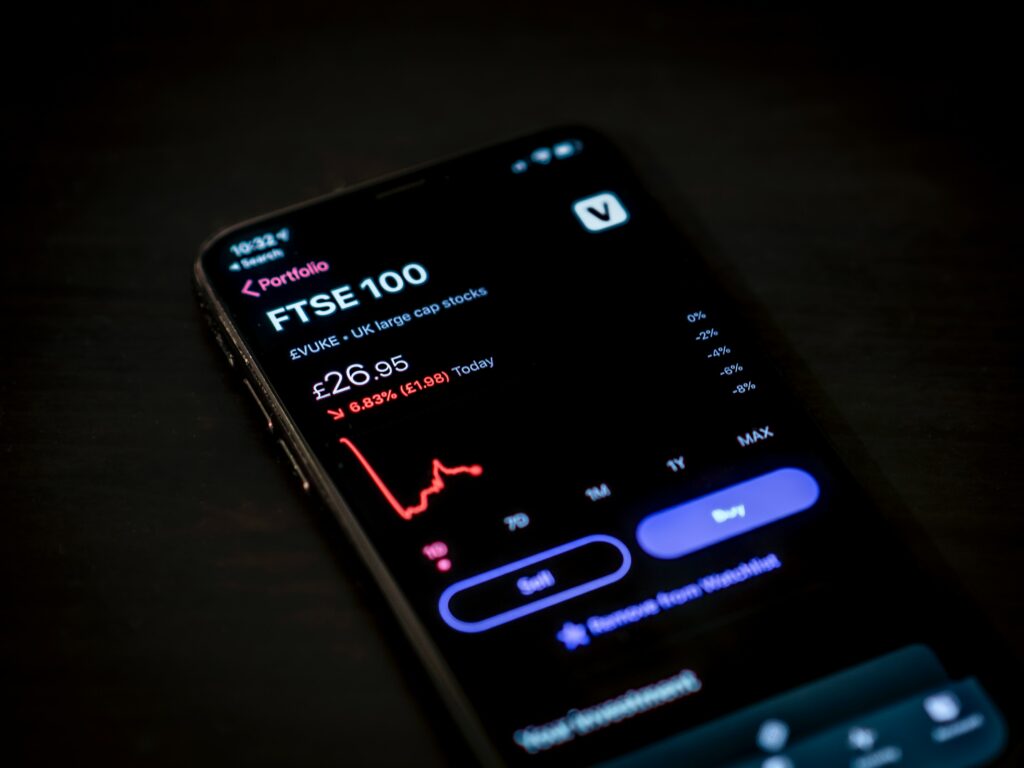
Cash Deposits
When it comes to internet trading, you’re most likely aware that cash deposits are no longer an option. In reality, the most recent legislation forbids online brokers from accepting cash payments from their customers, as opposed to accepting checks. It is essential that you deposit funds into your trading account in a way that can be traced when you first open an account with a brokerage firm. When you pay a broker with cash, there is no way to prove that you were the one who paid him.
It is possible for a broker to claim that the money you sent was never received, even if you have received confirmation that the money was sent to him. When it comes to the most serious CFD scams, con artists attempt to persuade consumers to lose their money voluntarily. Fraudulent CFD brokers make money by assisting their customers in depositing and losing assets as a result of their failure to hedge their customers’ holdings.
Do Not Become a Victim of CFD Trading Scams!
Some of the benefits of CFD trading include lower margin requirements, easy access to global markets, the absence of shorting or day trading rules, and the absence of or minimal fees. A high degree of leverage, on the other hand, magnifies losses when they do occur, and having to pay a spread to enter and exit positions can be expensive when large price movements do not take place. Indeed, in order to protect retail investors, the European Securities and Markets Authority (ESMA) has imposed restrictions on CFDs trading. You may have noticed that a large number of review sites and comments on social media claim that someone has assisted them in recovering their money from a CFD fraud scheme. Also, exercise caution when dealing with these. Many companies provide Gmail email addresses, invitations to connect directly through social media direct messaging, or requests for callbacks, among other things. If you come across a CFD scam, report it to the Financial Conduct Authority (FCA).
do you need help?
A lot of those who contact us have questions and concerns about their personal and business data being compromised. We aim to arm you with the legal and technical know-how in the fight against scams. Also, we will be able to refer you to top scam recovery agencies.
Please fill up the form. Rest assured that our support team will get in touch with you


